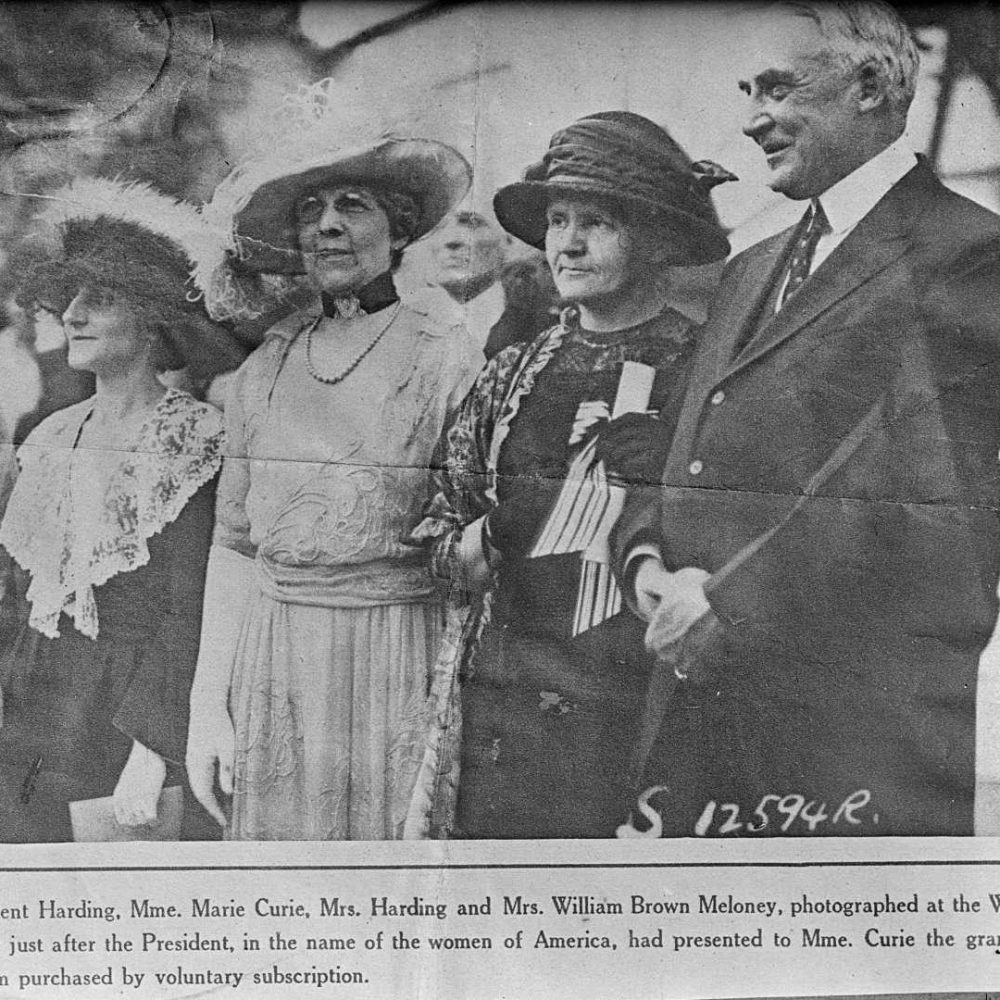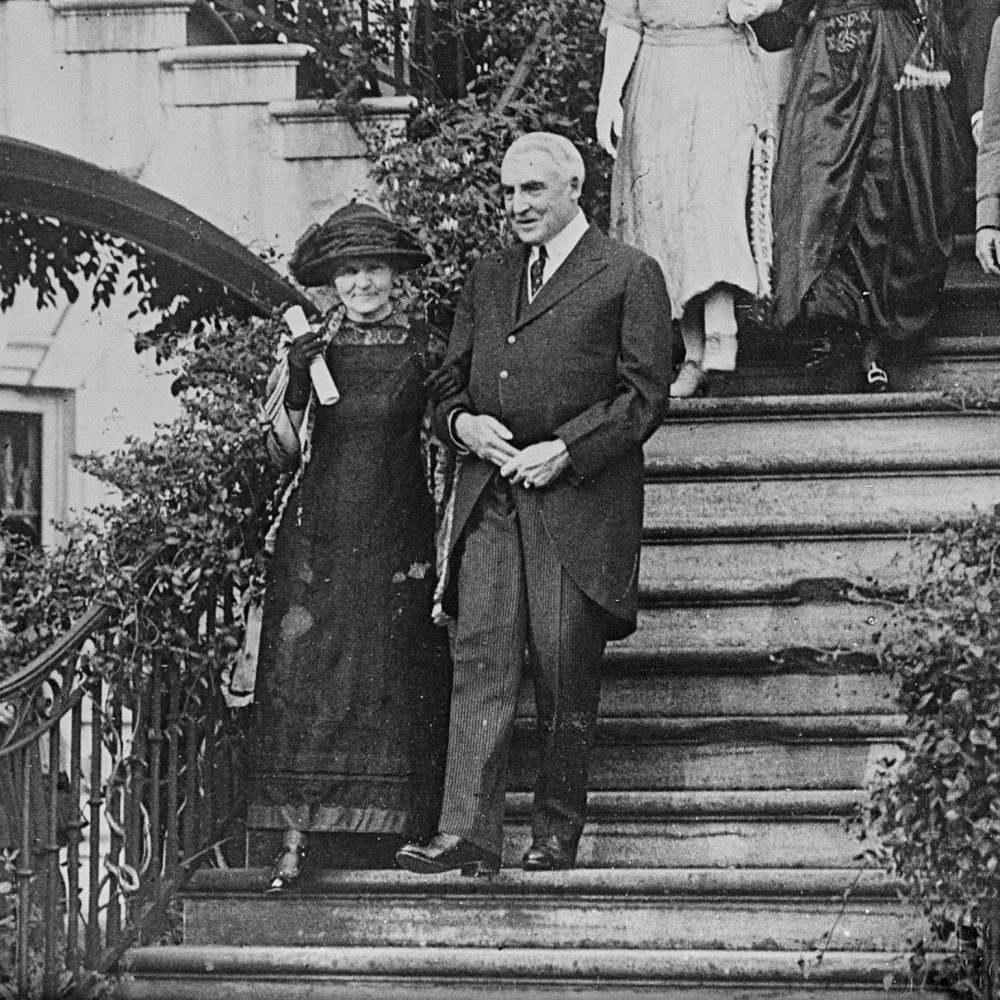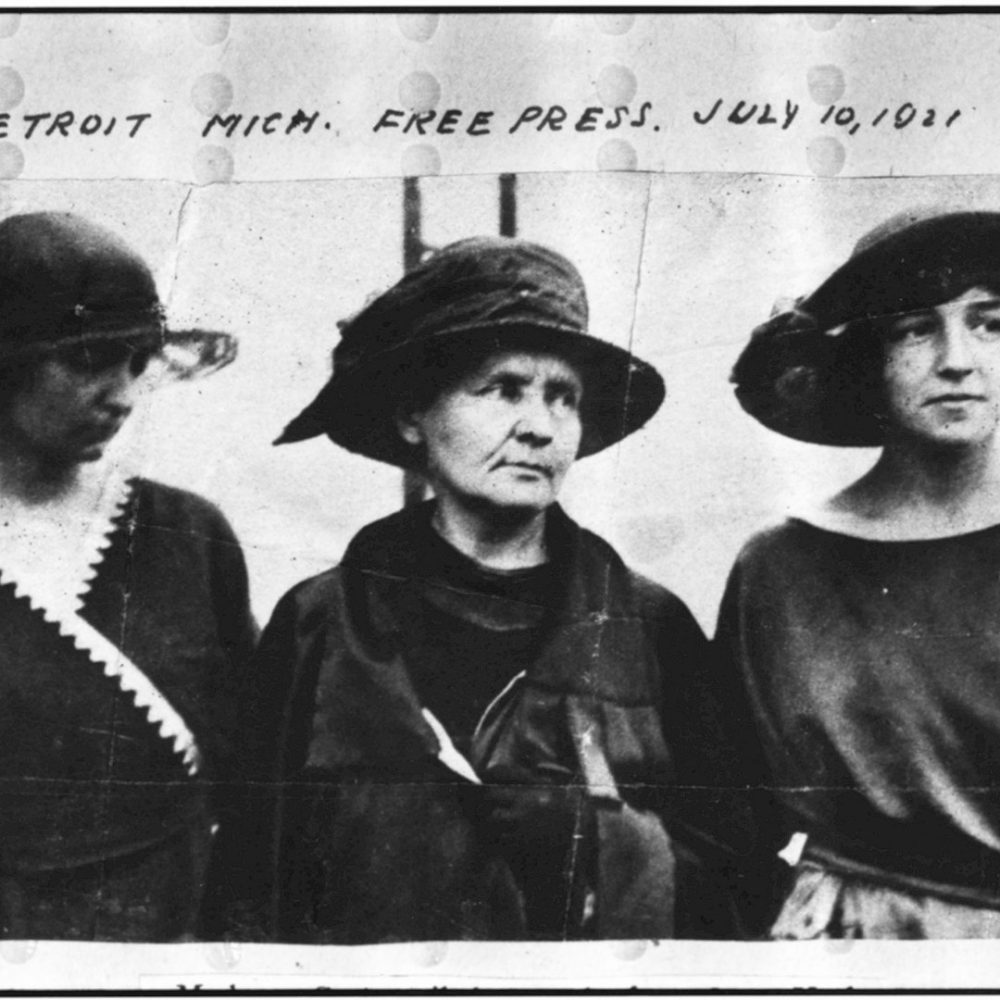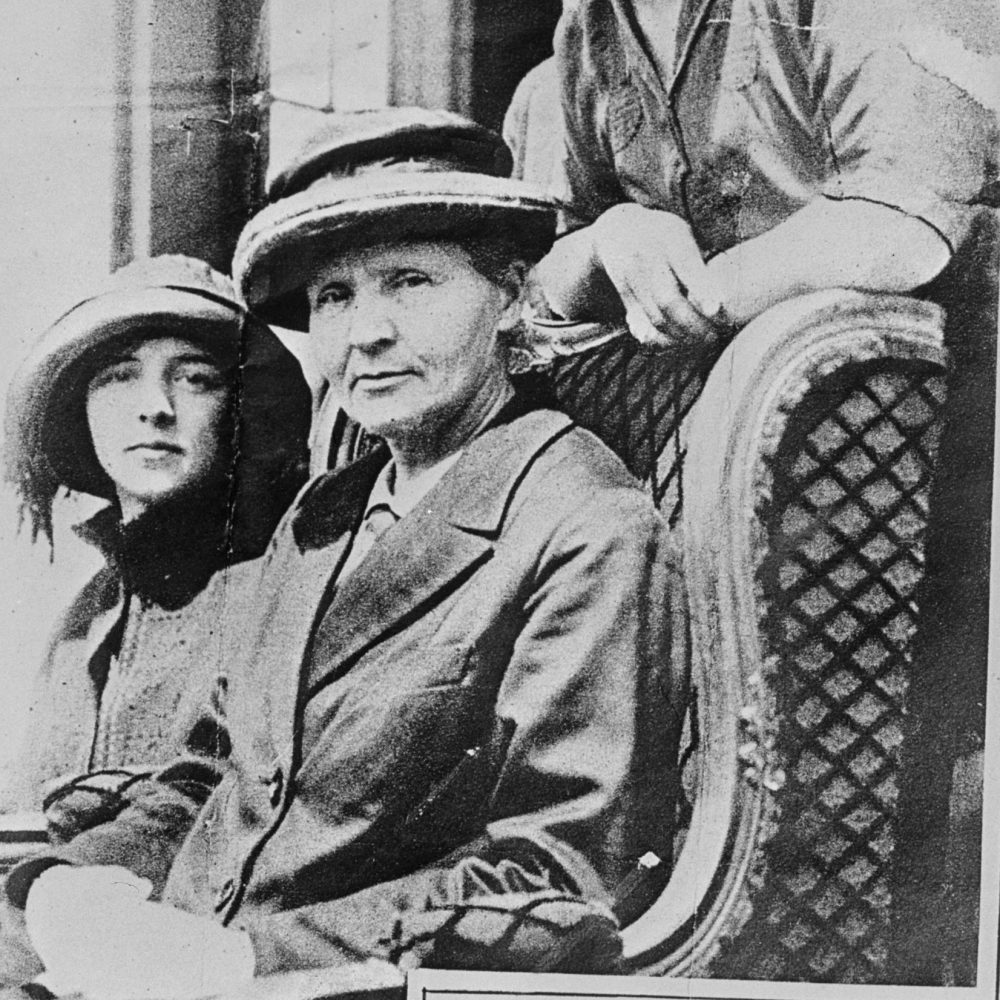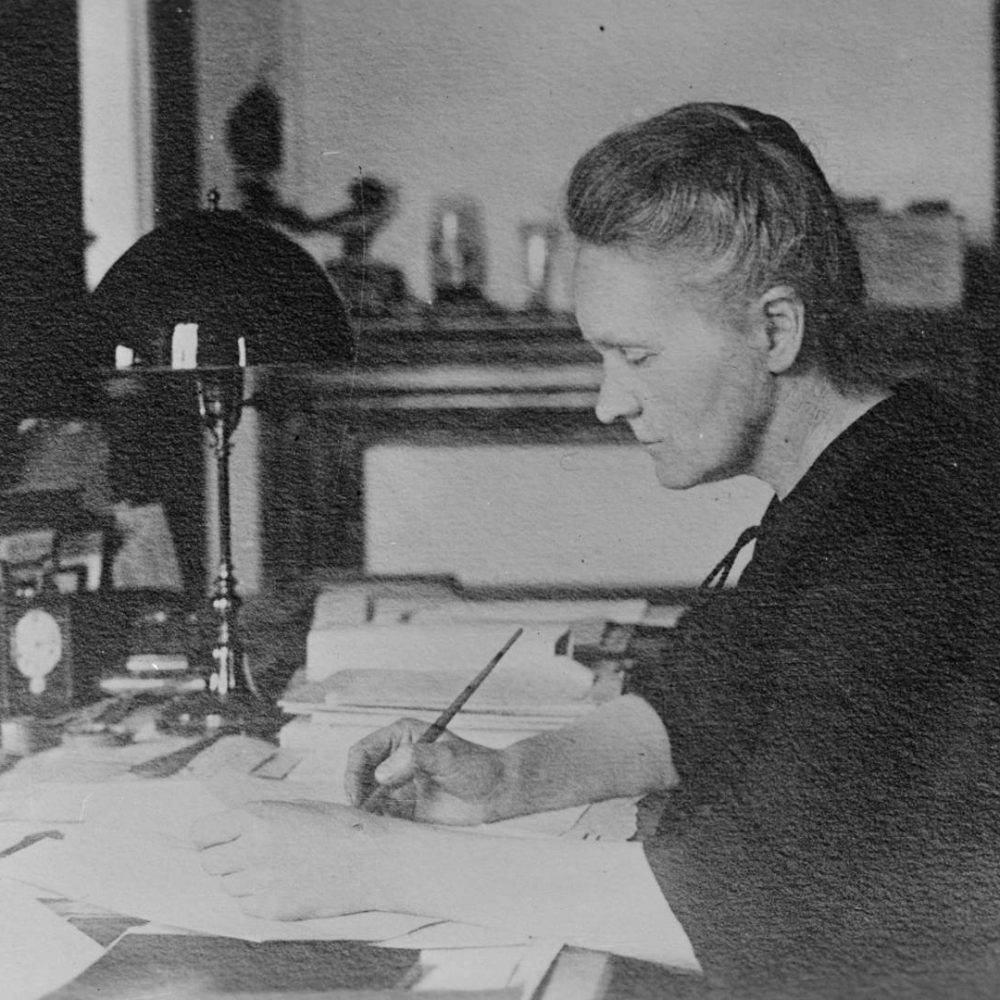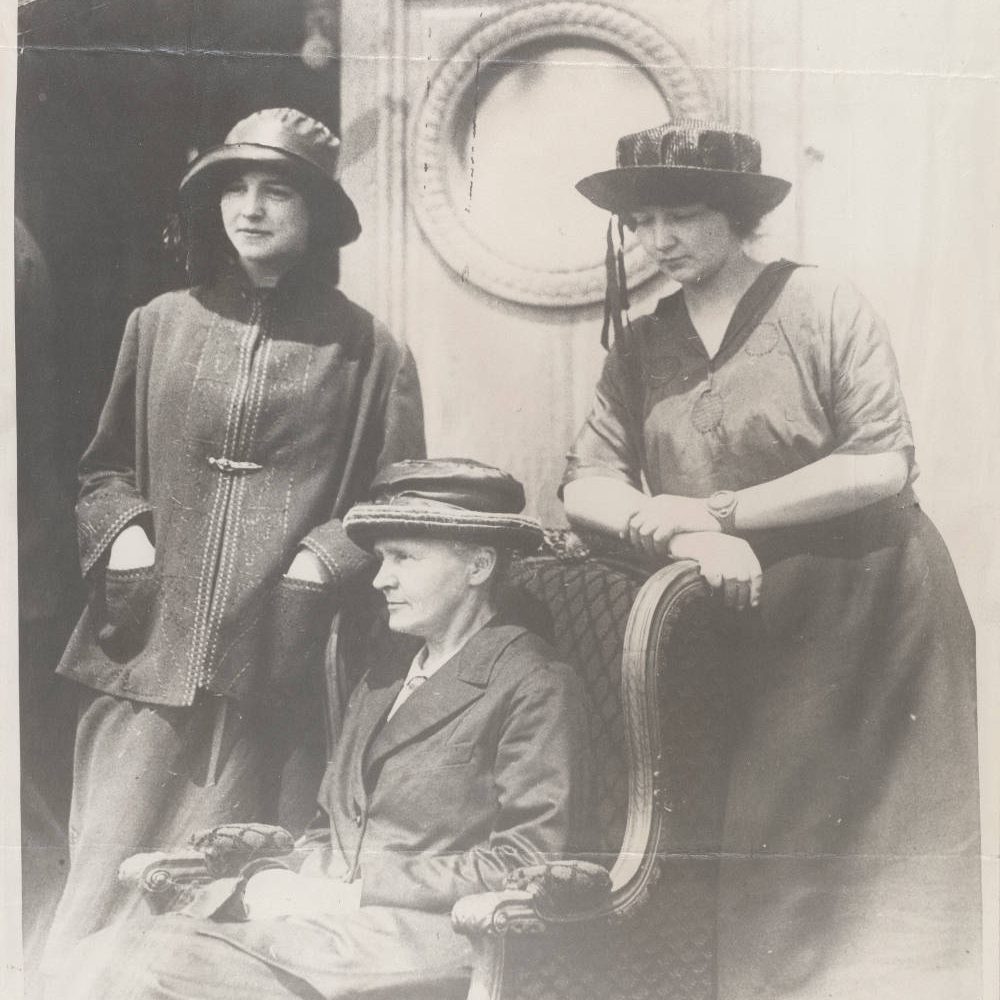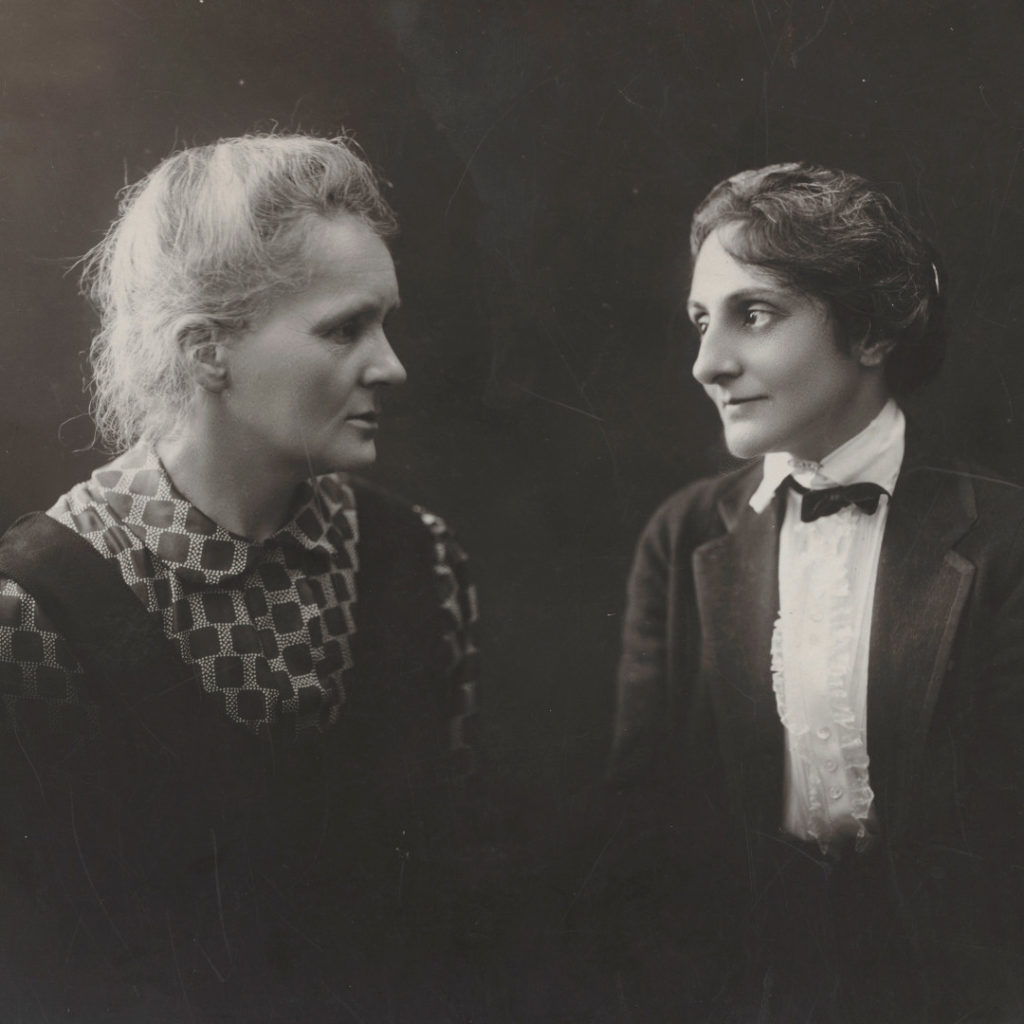
Friendship between Marie Curie & Mary Meloney
By the early 1920s, Marie Curie had received two Nobel Prizes and was leading the physics and chemistry laboratory of the Institut du Radium, which had opened in 1909. During World War I, Curie had stopped her research to work on bringing the new radiology techniquecs techniques to the battle front but was now back to her scientific work in Paris. Her daughter Irène was her assistant.
The link between Marie Curie and the United States would not have been possible without the help of Mary Meloney, editor in chief of the magazine The Delineator. In May 1920, Meloney interviewed Curie. When asked, “If you could make a wish, what would it be?“
Curie responded, “I need one gram of radium to continue my research but I cannot afford it. Radium is too expensive for me.”
Following this exchange, Meloney launched the Marie Curie Radium Fund in the United States and succeeded in raising $100,000 in less than a year through the support of American women, an amount worth over $1.2 million in today’s dollars, adjusting for inflation.
In May 1921, Curie and her two daughters crossed the Atlantic for a US tour and to thank the American donors for their generosity.
The generosity of Americans enabled Marie Curie to acquire the one gram of radium that revolutionized cancer treatment through radiotherapy.
Without their support, her scientific accomplishments would not have been possible.
Learn more about how you can continue this legacy of collaboration and be a part of the future of Curie’s cancer research.
A 6-week journey
Her six-week tour started in New York, where she attended a luncheon at the house of Mrs. Andrew Carnegie before receptions at the Waldorf Astoria and a dinner hosted by the Association of American University Women (AAUW) at Carnegie Hall.
She would later appear at the American Museum of Natural History, where an exhibit commemorated her discovery of radium. The American Chemical Society, the New York Mineralogical Club, cancer research facilities and the Bureau of Mines held events in her honor. Later that week, 2,000 Smith College students sang Curie’s praises in a choral concert before bestowing her with an honorary degree. Dozens more colleges and universities, including Yale, Wellesley and the University of Chicago, conferred honors on her.
It was during this trip, in a ceremony at the White House on May 20, 1921, that the President of the United States, Warren Harding, presented Marie Curie with the gram of radium purchased with the funds raised. It allowed the Institut to continue its research and achieve significant advances in the field of radiation therapy.
Since then, the friendship with the United Stated has remained. In 1929, once more through funds raised by American women, Curie received another gram of radium presented by President Hoover, which she donated to the University of Warsaw.
Since Marie Curie’s trip to the US in 1921, Institut Curie has built on her legacy, forging strong relationships and partnerships with Americans donors, American universities and cancer experts.
Learn more about the next stage innovative cancer research continuing Marie Curie’s legacy (link to anniversary page)

Institut Curie is continuing Marie Curie's legacy
Nobel Prize in Physics awarded to Pierre and Marie Curie for the discovery of natural radioactivity
Creation of the Institut du Radium, which became Institut Curie
Nobel Prize in chemistry awarded to Marie Curie for her work on radioactivity
Creation of the Curie Foundation
Marie Curie’s first trip to the US with her two daughters. President Harding gives her one gram of radium
Nobel Prize in chemistry awarded to Irène and Frédéric Joliot-Curie
First recovery from breast cancer through radiotherapy treatment at Institut Curie
Merger of Institut du Radium with the Curie Foundation
Launch of the first pediatric cancer services in France
First patients treated with protontherapy in France
First Curie therapy on prostatic cancer
Digitalization of patient files begins
Discovery of the DBAIT molecules at Institut Curie
Inauguration of Nikkon Center on Institut Curie campus, the first platform of photonic imaging in France
Merger of Institut Curie and Hôpital René Huguenin in Saint-Cloud
Launch of Shiva trial, based on the molecular profile of the tumor, one of the first in the world
Creation of the AJA (Adolescent Jeunes Adultes) Service for teenagers and young adults
Launch of the first Center of Cancer Immunotherapy in France
Upgrade of surgery services with 10 state-of-the-art operating rooms
Start of the extension construction of the hospital in Saint-Cloud
